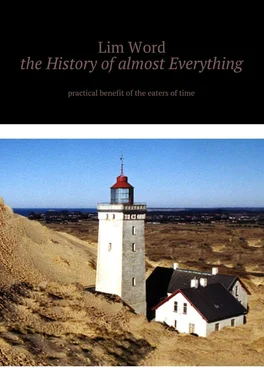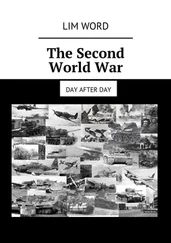In 1777, the son of Alexander, the beloved grandson of Catherine II, was born to the heir to the throne, (23-year-old) Paul and German (divided into dozens of kingdoms and dynasties by Germany – the “breeding economy” of princesses for Europe) of Sofia-Dorothea of Württemberg.
On April 8, 1783, after two campaigns of Russian troops to the Crimea, in order to support the Russian protégé (the last raid was conducted by A. Suvorov), Catherine issued a manifesto on the annexation of the peninsula, and also the Kuban to the Russian Empire. All this together is now called Tavrida. The last khan, Shahin-Geray, a man of the European mindset, although the spender and despot, who could not build communication with the Russian authorities and the Crimean Tatar population, renounced the throne. Later, with a content of 200,000 rubles (a lot), he lives in Kaluga, asks the Russian government and Porto to return to their homeland. There, in the fortress of the island of Rhodes, the Ottoman authorities execute him and execute him. Thus, fallen out of the Old Russian state in 1223 after the attack of the troops of the Golden Horde (ulus Dzhuchi), Crimea again becomes Russian.
August 4, 1783 Eastern Georgia passes under the protectorate of Russia. St. George’s treatise does not provide for the entry of the kingdom into the Empire, and therefore, the defense by all means and means (although such a point is noted). The construction of the Military-Georgian road, and the Vladikavkaz fortress that covers it, begins. In 1787, for some ulterior reasons, Russia withdraws its troops, two battalions. Georgia will be further struck by the Dagestani Ummah Khan and the Persian shah Agha-Mohammed, before the document signed by Pavel the First and the strong Russian garrison, will give her lands a long-awaited peace.
In 1787, in the summer, with a three-thousand suite, in the company of Potemkin and representatives of foreign missions, the empress goes to the Tauride voyage across Novorossia and the Crimea. The procession takes place, in particular, Kiev, Kherson, Bakhchisarai, Sevastopol, Sudak, Stary Krym, Feodosia, Mariupol and Azov.
This fashion show did not go unnoticed in the Port, there is a revanchist mood. Sultan puts forward a note on Russia’s refusal from the Crimea. The Russian envoy, in turn, passes a demand to Turkey to stop the attacks on the borders of Georgia. In the end, the diplomat is put in the Seven-door castle, which means in fact, the beginning of the war. The fighting begins in August 1787.
By that time, Russia was already preoccupied with the creation of a military alliance with Austria. The troops of Suvorov and Potemkin besiege Ochakov. The commander-in-chief is procrastinating, he strengthens the siege buildings, referring to the care of people, however, it comes to winter, and the forays of the Turks bring tangible losses. We have to accept Suvorov’s plan – a decisive assault. The attack, from different directions, with six columns, must be conducted at 20-degree frost. Ochakov was taken and, on the orders of Potemkin, completely destroyed. Then the action moves to the territory of modern Romania (the river Rymnik), where Suvorov, also commanding Austrian troops, inflicts a number of serious defeats to Porte. Austria itself, who achieved the liberation of Belgrade, but also experienced the bitterness of defeat in several battles, after the change of emperors, leaves the war. In December 1790, Suvorov begins the assault on Ismail, who represents, according to him, “Fortress without weaknesses.” The forces of the parties: the Russian troops 31 thousand people, 600 guns, the Turkish garrison – 35 thousand people, with 260 guns, plus 10-meter walls of the fortress and moat. After two days of artillery preparation, at three o’clock in the morning, on the signal rocket, the columns storm fortifications. The night turns into a day, fifteen hundred horses, breaking out of burning stables, intensify confusion. To retreat to the Ottomans is impossible: the Sultan defined the execution as the only punishment for those who leave the fortress. The cannon fire of 20 cannons supporting the infantry cleans the streets, but every house has to be taken with a fight. Suvorov throws into action the huntsmen, who, acting mercilessly, with bayonets alone, complete the rout by four days.
Losses of the parties: Porta – 26 thousand people, 8 thousand prisoners, Russian empire 4,600 people. The corpses of Turkish soldiers have to be thrown into the Danube, since it is impossible to work earthworks in winter on such a scale.
According to the Treaty of Yaslav, Izmail returns to Turkey.
On the Black Sea, the Russian fleet disrupts the plans of the Turkish command to land troops in the Crimea (the battle in the Kerch Strait). The new Sultan Selim III can not approach the signing of the peace with at least one victory. The Treaty of Ias is concluded on January 9, 1791. After Russia, the Crimea, the Northern Black Sea Coast, and some other lands are assigned; they are based Odessa, Grigoriopol, Tiraspol. New lands – the Black Sea Region, Volgograd, as well as Volhynia, are inhabited by about 200 thousand ethnic Russians, who do not pay taxes at all, who are invited by Catherine.
In addition, Turkey refuses hostile actions against Georgia. Once formidable, Porta now evokes sympathy, the Russian ambassador, under his responsibility, strikes out of the peace treaty an item on a large, 7 million rubles, monetary indemnity.
Catherine’s dreams – the creation of New Byzantium, the continuation of Russia in the conquered Ottoman Empire, do not come true because of the position of the French, who in the East are already in a privileged position (the Union of the Lily and the Crescent), and the British, who do not want to violate the existing balance of power.
…Using the diversion of Russian forces to Turkey, Sweden (King Gustav III) is once again trying to recover the lost lands, and, June 21, 1788, begins fighting. The main idea is the landing of 20,000 troops in St. Petersburg, from where it is most convenient to dictate the terms of peace. The balance of forces: the Swedish army of 30 thousand, the Russian army, recruited urgently from local recruits – 14 thousand. On land, Swedes do not achieve success and retreat to their limits. Fighting takes place at sea; Fortunately, the whole Russian fleet has not yet gone to the Dardanelles. The Russian naval commander is the famous V. Ya. Chichagov, however, the Swedes have an advantage in the number of guns and warships. Battles are followed: the Gogland, the no man’s, the Eland – the Swedes retreat, the Rochensalme – the Russians are deprived of 2 ships, the Swedes 39, including the admiral frigate. In the Vyborg battle of 1790, Sweden loses 67 rowing ships and bids farewell to the dream of landing in St. Petersburg. But, on July 9, 1790, Gustav the Third receives an active long-awaited victory and approaches the signing of peace while retaining his face; In the Second Battle of Rocensalm, the Russian fleet is losing 52 warships, against 5 Swedish ships.
In total, the losses of the parties with people: Russians – 6 000 people, Swedes – 18 000. The Perpetual Peace Treaty of Verherry is signed – the status quo is preserved throughout the territories.
Meanwhile in Poland, again, the riot is ripening. The society is divided into supporters of the Targovitsky confederation, the friendship of which is bought by Catherine the First, and the “patriotic” party, which controls the Sejm. The first, roughly speaking, for the former feudal orders and alliance with Russia, the latter for some vague “Constitution of May 3”, somewhat softening tough serfdom in Poland, and promoting the ideas of the Constitutional monarchy. The latter looks progressive, at the time, however, a sharp increase in the number of Polish troops, revanchism, the possibility, in the future, of aggression against Russia is attached to it, as it happened many times before.
Читать дальше












